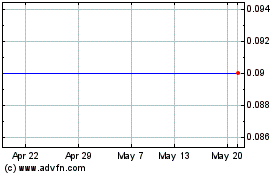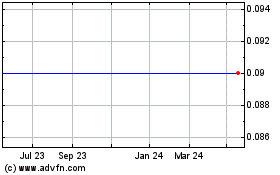Amendments to IFRS 1 "First-time Adoption of International
Financial Reporting Standards" require that first-time adopters
apply the requirements in IFRS 9 "Financial Instruments" and IAS 20
"Accounting for Government Grants and Disclosure of Government
Assistance" prospectively to government loans existing at the date
of transition to IFRSs. Entities may choose to apply the
requirements retrospectively if the information needed to do so had
been obtained at the time of initially accounting for the loan.
This standard is effective for annual periods beginning on or after
1 January 2013, subject to EU endorsement. This is not expected to
have an impact on the Group as IFRS has been historically used;
Amendments to IFRS 7 "Financial Instruments: Disclosures"
require disclosure of information that will enable users of
financial statements to evaluate the effect or potential effect of
netting arrangements, including rights of set-off associated with
the entity's recognised financial assets and recognised financial
liabilities, on the entity's financial position. This standard is
effective for annual periods beginning on or after 1 January 2013
and interim periods within those annual periods, subject to EU
endorsement;
Amendments to IFRS 9 "Financial Instruments" and IFRS 7
"Financial Instruments: Disclosures" require entities to apply IFRS
9 for annual periods beginning on or after 1 January 2015 instead
of on or after 1 January 2013, subject to EU endorsement. Early
application continues to be permitted. The amendments also require
additional disclosures on transition from IAS 39 "Financial
Instruments: Recognition and Measurement" to IFRS 9;
IFRIC 20 "Stripping Costs in the Production Phase of a Surface
Mine" clarifies when stripping costs incurred in the production
phase of a mine's life should lead to the recognition of an asset
and how that asset should be measured, both initially and in
subsequent periods. This interpretation is effective for periods
beginning on or after 1 January 2013, subject to EU endorsement.
This will impact the Group's Financial Statements, however the
Directors believe they are in a position to ensure compliance with
this standard when it becomes effective;
IAS 27 "Separate Financial Statements" replaces the current
version of IAS 27 "Consolidated and Separate Financial Statements"
as a result of the issue of IFRS 10 (see above). This revised
standard is effective for periods beginning on or after 1 January
2013, subject to EU endorsement. The Directors are assessing the
possible impact of this standard on the Group's Financial
Statements.
IAS 28 "Investments in Associates and Joint Ventures" replaces
the current version of IAS 28 "Investments in Associates" as a
result of the issue of IFRS 11 (see above). This revised standard
is effective for periods beginning on or after 1 January 2013,
subject to EU endorsement, and is not expected to have an impact on
the Group's Financial Statements.
Amendments to IAS 1 "Presentation of Financial Statements"
require items that may be reclassified to the profit or loss
section of the income statement to be grouped together within other
comprehensive income (OCI). The amendments also reaffirm existing
requirements that items in OCI and profit or loss should be
presented as either a single statement or two consecutive
statements. These amendments are effective for periods beginning on
or after 1 July 2012, subject to EU endorsement. The Directors are
assessing the possible impact of these amendments on the Group's
Financial Statements.
Amendments to IAS 19 "Employment Benefits" eliminate the option
to defer the recognition of gains and losses, known as the
"corridor method"; streamline the presentation of changes in assets
and liabilities arising from defined benefit plans, including
requiring remeasurements to be presented in other comprehensive
income; and enhance the disclosure requirements for defined benefit
plans, providing better information about the characteristics of
defined benefit plans and the risks that entities are exposed to
through participation in those plans. These amendments are
effective for periods beginning on or after 1 January 2013, subject
to EU endorsement, and are not expected to have an impact on the
Group's Financial Statements.
Amendments to IAS 32 "Financial Instruments: Presentation" add
application guidance to address inconsistencies identified in
applying some of the criteria when offsetting financial assets and
financial liabilities. This includes clarifying the meaning of
"currently has a legally enforceable right of set-off" and that
some gross settlement systems may be considered equivalent to net
settlement. This standard is effective for annual periods beginning
on or after 1 January 2014, subject to EU endorsement.
Amendments to IFRS 10 "Consolidated Financial Statements", IFRS
11 "Joint Arrangements" and IFRS 12 "Disclosure of Interests in
Other Entities" clarify the IASB's intention when first issuing the
transition guidance in IFRS 10, provide similar relief in IFRS 11
and IFRS 12 from the presentation or adjustment of comparative
information for periods prior to the immediately preceding period,
and provide additional transition relief by eliminating the
requirement to present comparatives for the disclosures relating to
unconsolidated structured entities for any period before the first
annual period for which IFRS 12 is applied. This applies to annual
periods beginning on or after 1 January 2013;
"Annual Improvements 2009 - 2011 Cycle" sets out amendments to
various IFRSs and provides a vehicle for making non-urgent but
necessary amendments to IFRSs:
-- An amendment to IFRS 1 "First-time Adoption of International
Financial Reporting Standards" clarifies whether an entity may
apply IFRS 1:
(a) if the entity meets the criteria for applying IFRS 1 and has
applied IFRS 1 in a previous reporting period; or
(b) if the entity meets the criteria for applying IFRS 1 and has
applied IFRSs in a previous reporting period when IFRS 1 did not
exist.
The amendment also addresses the transitional provisions for
borrowing costs relating to qualifying assets for which the
commencement date for capitalisation was before the date of
transition to IFRSs.
-- An amendment to IAS 1 "Presentation of Financial Statements"
clarifies the requirements for providing comparative
information:
(a) for the opening statement of financial position when an
entity changes accounting policies, or makes retrospective
restatements or reclassifications; and
(b) when an entity provides financial statements beyond the
minimum comparative information requirements.
-- An amendment to IAS 16 "Property, Plant and Equipment"
addresses a perceived inconsistency in the classification
requirements for servicing equipment.
-- An amendment to IAS 32 "Financial Instruments: Presentation"
addresses perceived inconsistencies between IAS 12 "Income Taxes"
and IAS 32 with regard to recognising the consequences of income
tax relating to distributions to holders of an equity instrument
and to transaction costs of an equity transaction.
-- An amendment to IAS 34 "Interim Financial Reporting"
clarifies the requirements on segment information for total assets
and liabilities for each reportable segment.
This applies to annual periods beginning on or after 1 January
2013.
4. Loss for the period
Loss for the period includes the following items which are
unusual because of their nature, size or incidence:
6 months to 6 months
30 June 12 to
Unaudited 30 June
$ 11
Unaudited
$
Foreign exchange (losses)/gains (235,982) (550,637)
5. Dividends
No dividend is proposed for the period.
6. Loss per share
The calculation of loss per share of 0.04 cents (30 June 2011:
0.03 cents) is based on a retained loss of $1,366,923 for the
period ended 30 June 2012 (30 June 2011: $1,052,524) and the
weighted average number of shares in issue in the period ended 30
June 2012 of 3,868,772,016 (30 June 2011: 3,302,759,190). No
diluted earnings per share is presented as the effect on the
exercise of share options would be to decrease the loss per
share.
Details of share options that could potentially dilute earnings
per share in future periods are disclosed in note 8 to these
condensed interim financial statements.
7. Property plant and equipment
During the period the Group acquired various items of mining
equipment with an aggregate value of $451,885. Assets with a net
book value of $57,989 were disposed of during the period.
8. Called up share capital
There has been no movement in the authorised share capital
during the period. The movements in issued share capital are as
follows:
Issued Number of Ordinary Share premium Total
shares shares $ $
$
At 1 January 2012 3,868,772,016 4,595,188 38,661,407 43,256,595
At 30 June 2012 3,868,772,016 4,595,188 38,661,407 43,256,595
Share options and warrants
Atlantic Coal (LSE:ATC)
Historical Stock Chart
From Jun 2024 to Jul 2024

Atlantic Coal (LSE:ATC)
Historical Stock Chart
From Jul 2023 to Jul 2024
